
By Aaron Wong, Badzine Correspondent. Photos: BadmintonPhoto.com
Big Deal
“Everyone” being there or desiring to be there shows how much it is a big deal. You couldn’t claim that about the Asian Championships or Super Series Masters Finals in the last 6 months. In those cases, you could mutter the words “big deal” but the tone would have been rhetorical or perfunctory as evidenced by the turnouts. Just because the Badminton World Federation and tournament organisers feel a particular event is important does not automatically make it so.
 Regularly enough of late, there has been a letdown in the expected strength or enthusiasm of participation by the powerhouses of the sport. Some Super Series are well attended whereas others make a farce of seedings where, for example, the women’s doubles ladder at one tournament suffered absenteeism and slim pickings that eventuated in pairs having byes all the way to the semi-finals.
Regularly enough of late, there has been a letdown in the expected strength or enthusiasm of participation by the powerhouses of the sport. Some Super Series are well attended whereas others make a farce of seedings where, for example, the women’s doubles ladder at one tournament suffered absenteeism and slim pickings that eventuated in pairs having byes all the way to the semi-finals.
The TUC is different. China arrives in full force, ready to defend their stranglehold on the trophies. Everyone else is chasing.
The Chasers
On paper, of the two powerhouses that have not ever won the Thomas Cup, Denmark are ahead of Korea this time. Denmark’s line up have proven to be solid performers by bringing along two Top 10 men’s singles players in Peter Gade and Jan Jorgensen as well as two Top 10 men’s doubles pairs in Boe/Mogensen and Paaske/Rasmussen, all of whom have consistency on the international circuit.
 On the other hand, Korea are not bringing along their cornerstone Lee Yong Dae, who was made to work overtime in last spring’s Sudirman Cup. Their team is not without talent – Head Coach Kim Joong Soo told Badzine last month that a Shin Baek Cheol / Jung Jae Sung pairing would be just as strong as Jung/Lee – but somehow there is the feeling both that it will not be their year and that it could be Denmark’s. Let us see, however, whether this initial state of starting confidences shifts.
On the other hand, Korea are not bringing along their cornerstone Lee Yong Dae, who was made to work overtime in last spring’s Sudirman Cup. Their team is not without talent – Head Coach Kim Joong Soo told Badzine last month that a Shin Baek Cheol / Jung Jae Sung pairing would be just as strong as Jung/Lee – but somehow there is the feeling both that it will not be their year and that it could be Denmark’s. Let us see, however, whether this initial state of starting confidences shifts.
Hosts Malaysia
Host nation Malaysia, as always, stand more of a chance in the men’s category compared to the women’s because there is breadth and depth. Despite having the world #1 in men’s singles and also men’s doubles, the Malaysian press broadcast their side’s weaknesses up front.
A lot of the time, Malaysians have difficulty delivering the right intentions to ensure success or come back in spirit from behind as factions of their fraternity are at odds. The local press, critics and spectators can be harsh, and players and coaches are not always in sync.
And because the English is a main language locally, the world and their opponents are aware that this is the kind of unhelpful expectation that the players on court do not need at such a time which might just be in the opponent’s favour come deuce. The Koreans and Danish could have a smoother time integrating in their junior ranks or re-using a senior player because they are not as scrutinised in English.
The Beautiful Game
Winning is the only agenda for all the teams. But for spectators these games still offer some proponents of the beautiful game. Those of us with long memories can save for one more Thomas Cup edition needing to hunt for a new favourite player especially as far as men’s singles goes. Peter Gade, Taufik Hidayat, Wong Choong Hann, names who created unique styles and which following generations continue to emulate and innovate, are still slated to play key roles in helping make possible a rendezvous with China for next weekend.
Beauty and style over pure power in badminton has been discussed recently. It is, thus, a welcome si ght to see former world #1 Lee Hyun Il of Korea back: not so much because he’ll give his country a fighting chance but because spectators are secretly glad to see the return of such a rare proponent of effortless footwork and southpaw grace.
ght to see former world #1 Lee Hyun Il of Korea back: not so much because he’ll give his country a fighting chance but because spectators are secretly glad to see the return of such a rare proponent of effortless footwork and southpaw grace.
Surprise guests
Lee Hyun Il was certainly not expected to be seen in Kuala Lumpur, yet Korea seem to have found the ideal secret weapon as a third men’s singles, a slot that could include Bao Chunlai, who was the loser in Lee’s last international victory. Denmark, also, stunned everyone by putting on their list of players no other than … their coach Kenneth Jonassen, who could also swap the training suit for shorts and the national shirt and get on court. Jonassen recently gave his club Greve the title in the Danish league by playing together with his team-mates. And if he doesn’t, another surprise could come in in the name of Viktor Axelsen. The 16-year-old just got back from Mexico, where he beat the odds – and all Asians – to become the first European singles gold medallist in the World Junior Championships.
 China’s Über-women
China’s Über-women
In their Uber Cup campaign, their most successful and adaptable doubles specialist Zhang Yawen is missing from the list but it should not make an ounce of difference because any of the women’s team – singles and doubles – is world #1 calibre were it not for their team-mates.
This time the Korean girls have a good chance seeing as Indonesia and the Netherlands have made it to the finals before.
Conclusion
So unless they all get food poisoning, China’s teams will be in the top two left standing in the men’s and women’s competitions. A key difference between China and other teams is that their “Spring Chicken” players are only young in age but not in terms of experience whereas the younger players from the other nations have a lot of greenness to lose.
Nowadays you cannot count on all the big names turning up at the one event… unless it is the Thomas and Uber Cups. The swashbuckling begins.
Stay tuned with Badzine as we bring you all the action and photos live from Stadium Putra in Kuala Lumpur.
For complete results from the 2010 Thomas and Uber Cups, CLICK HERE
![THOMAS & UBER CUPS 2010 Preview – Badminton’s Best All In! Badminton’s Thomas Cup and Uber Cup (TUC) will unfold concurrently at the Putra Stadium in Kuala Lumpur from tomorrow, May 9, 2010. These are the most prestigious and coveted team […]](http://www.badzine.net/wp-content/uploads/Newsflash-thumbnail.png)

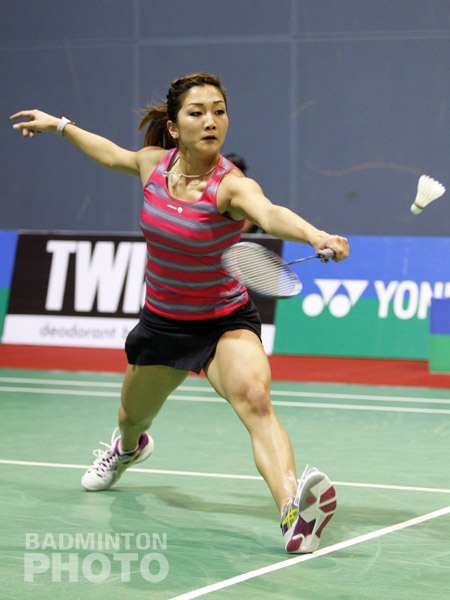
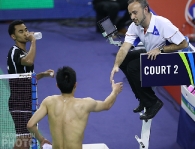
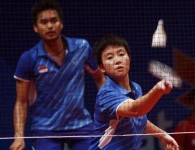
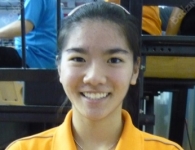
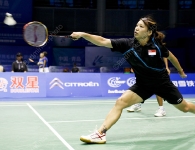
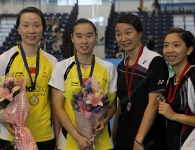
Leave a Reply